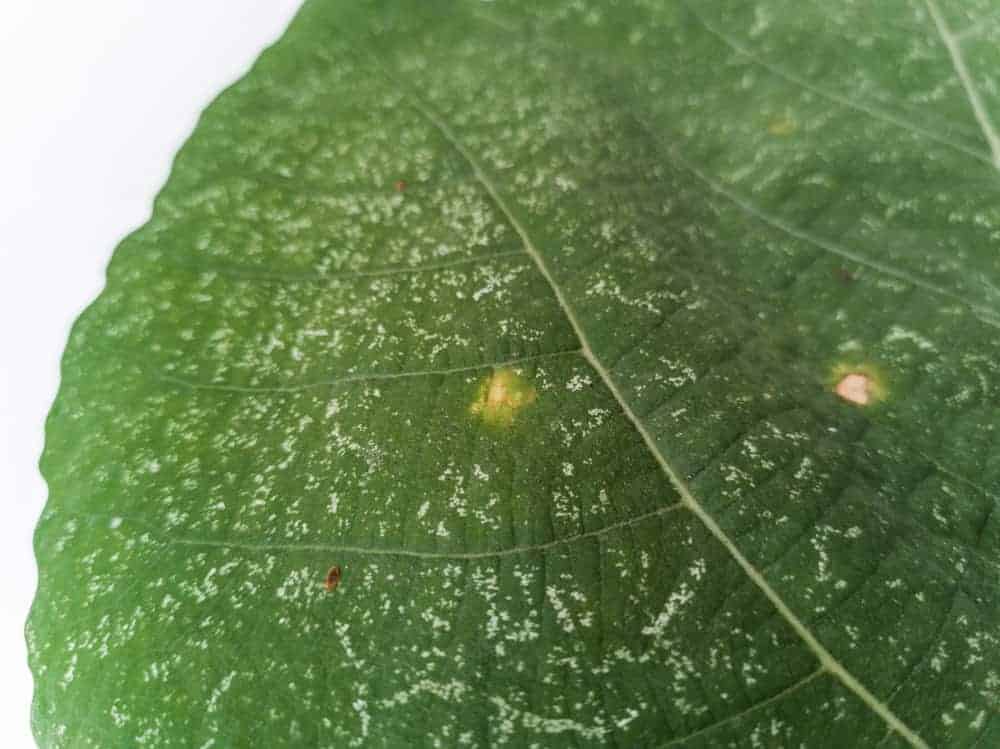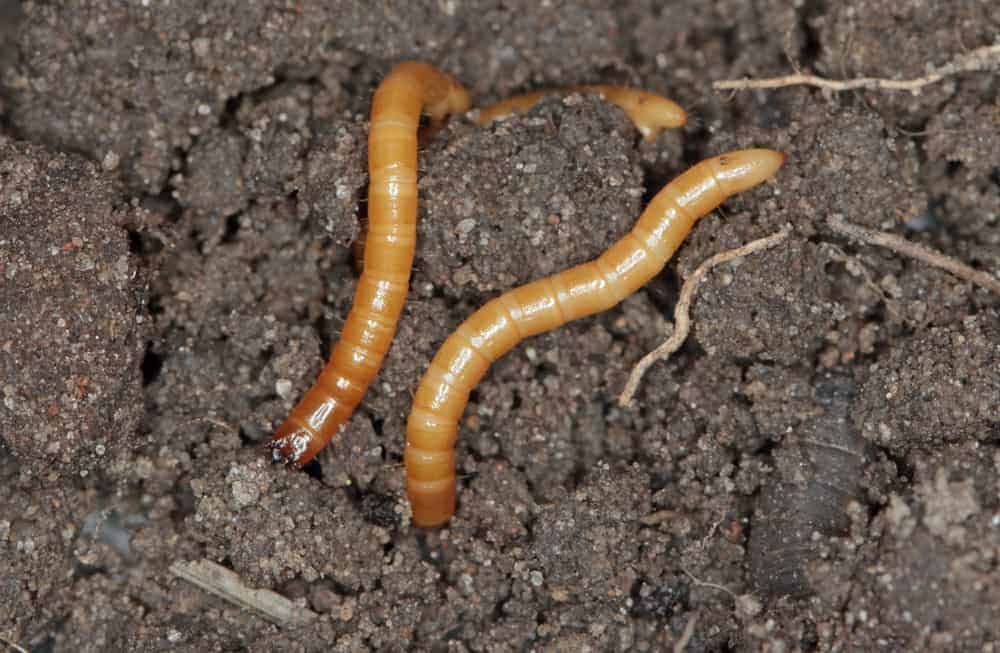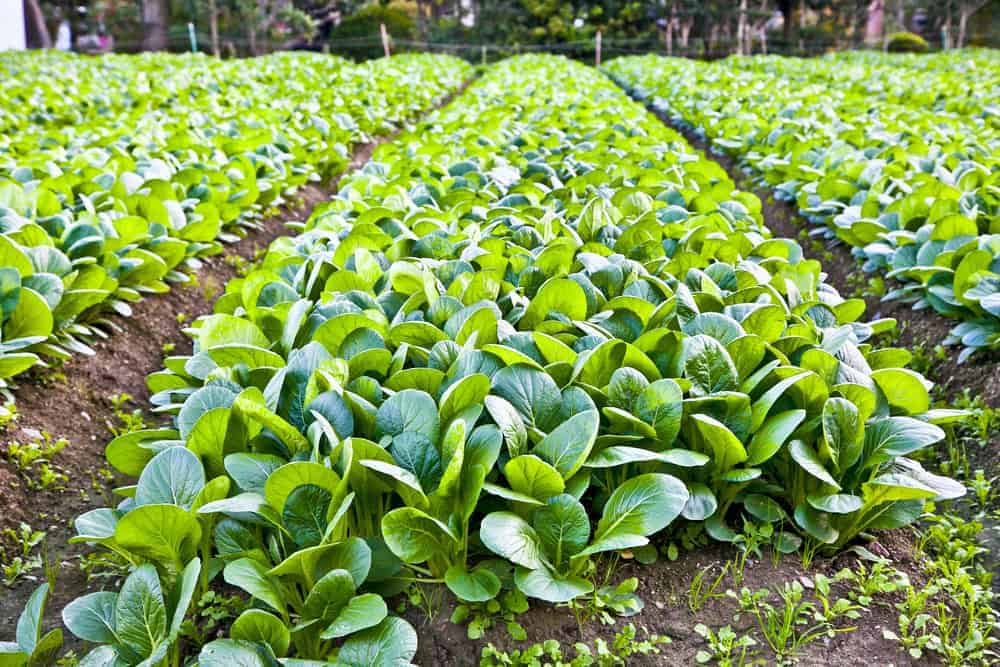The advantages of this cool-weather vegetable rich in vitamins and minerals are its fantastic taste and the fact that you can grow it throughout the year. Start sowing seeds in early spring and keep adding small, frequent plantings until late summer to ensure continually harvest by winter. In average, you will need to plant approximately thirty plants for two adults per season.
There are three different types of spinaches (Spinacia oleracea) you can grow. Savoy spinach is a highly productive, short plant with deeply crinkled leaves. Semi-Savoy spinach is an upright variety resistant to most diseases and bolting. Smooth-leafed spinach, with its flat foliage, is the primary choice for processing because it is easy to clean.
Why You Should Grow Spinach
Probably originated from Persia, spinach came to Europe about 1000 AD. In the XVIII century, gardeners from Netherlands, England, and France began cultivating this vegetable, but the Spaniards were those who brought it to the Americas eventually.
Nowadays, the largest producer of spinach in the world is China, with 85% of the world’s supply. During the past ten years, the production of spinach in the US has increased dramatically. Every year gardeners in the US harvest approximately 618,000 pounds (280,000 metric tons) of spinach, mainly in California, Texas, Arizona, and New Jersey.
This fantastic vegetable is highly rich in vitamin A, riboflavin B2, vitamin B6, folate (vitamin B9) vitamin C, vitamin E, and vitamin K. Also, this plant low in calories is an excellent source of iron, calcium, zinc, magnesium, potassium, manganese, and fiber.
Even though spinach contains high quantities of iron and calcium, our body can’t absorb them due to the high content of oxalic acid, which inhibits the absorption of those valuable minerals in larger quantities.
How to Plant Brussels Sprouts in Your Garden

Always purchase fresh seeds because you can’t store the old one well. Also, you should sow them directly in the garden since seedlings are difficult to transplant. The ground needs to be moist, well-drained, loosen, and nitrogen-rich. Sow your spinach about six weeks before the last frost.
Add 5 ounces (142 g) of well-rotted compost per square yard (170 g / m2) about a week before sowing. If you have prepared the ground properly, you can drop the seeds in the barely thawed soil as soon as spring comes.
If you live in the region with long, cold springs, you can plant your spinach every ten days successive until mid-May. In warmer areas, the best solution is planting this veggie in the shade of beans or sweet corn. That way, you will protect them from the hottest sun.
To get abundant yields, you should sow 12 to 15 spinach seeds per 1 foot (30.5 cm), 0.5 to 1 inch (1.3 – 2.5 cm) deep into the ground, and 3 to 5 inches (7.6 – 13 cm) apart. Provide at least 10 to 12 inches (25.5 – 30.5 cm) space between rows to prevent weeds.
If the temperatures are not extremely low or higher than 70 F (21 C), you can expect your seeds germinate in five to ten days. After seedlings are approximately 2 to 4 inches (5 – 10 cm) tall, it is time for tinning.
How to Care Spinach
Soil
Choose to grow your spinach on deep, loamy, well-drained soils rich in organic matter. This veggie prefers the pH below 7, and you can cultivate it when the pH is approximately 6.5 to 7.
Keep in mind that your plants will need at least 6 to 12 inches (15 – 30.5 cm) space around to increase airflow and leave the leaves enough space to reach their full size.
Light
You should know that winter varieties of spinach need full sun, but summer types require partial shade. So, you can sow seeds in places where you can’t grow other vegetables that need full sun.
Mulching

Add enough mulch over the ground to keep the soil adequately moist and weed-free. The best options are straw, hay, and grass clippings.
Temperatures
Since this cool-weather veggie thrives well in cold weather and prefers short days and the temperatures from 35 and 75 F (1.7 – 24 C), you should choose to grow it in autumn.
Sow seeds, previously soaked in water, directly into the ground in your garden approximately four to six weeks before the last frost in spring.
Keep in mind that your veggies will grow tall and start blooming and bolting as soon as the days become longer than 13 – 14 hours, and the temperatures increase above 75 F (24 C).
If you live in northern States, you can plant spinach twice a year, at the beginning of spring, and once more in midsummer.
In southern regions, you can count on spinach to tolerate a light frost and to sow this vegetable as soon as the temperatures are above 28 F (-2 C).
That way, you can harvest your crop throughout the season until winter. Even then, you just need to cover your plants with polypropylene frost blankets and save spinach for the prolonged harvest.
Watering

Spinach is a plant which needs lots of water and excellent drainage. After sowing seeds, cover them with 0.5 inches (1.3 cm) of soil and water the place abundantly. Keep watering regularly until seeds germinate.
Then thin your plants and keep watering. Be aware that spinach like humidity, but won’t thrive in the soggy ground. When the temperature goes above 80 F (26.7 C), cover your vegetable with shade cloth to keep the soil moist.
Fertilizer

Since spinach is a heavy feeder, you should add 2 to 4 pounds (5 – 10 cm) of fertilizer per 100 sq ft (9.3 m2) into the ground when you sow seeds.
Keep feeding your plants with a fertilizer rich in nitrogen every two weeks to encourage the production of foliage and keep your vegetable thrives.
Take care to add it at least 4 to 6 inches (10 – 15 cm) far enough of the plants’ bases to avoid burning the roots. Also, don’t forget to water the soil thoroughly right away after fertilizing.
Thinning

When the time comes, begin with thinning. Provide at least 3 to 5 inches (7.6 – 13 cm) between seedlings and let the most vigorous plants thrive. That is the only way to avoid the congestion of rows, bolting, and harvesting weak and tiny spinach.
Weeding

Instead of hand pulling weeds, which may harm the roots of your spinach, you should spread a light mulch of straw, hay, and grass clippings along the rows. It is an elegant way to suppress weeds growing.
How to Harvest Spinach

In general, you can begin harvesting after approximately six to eight weeks when your plants have at least six leaves, which are 3 to 4 inches (7.6 – 10 cm) long.
There are two ways of cutting. Pick out all the leaves 1 inch (2.5 cm) above the ground level and let your spinach grow back. That way, you will get two or three crops. On the other hand, you can collect just the largest leaves as needed.
Cutting the outside leaves through the main stem has two advantages. You will get a lot of fresh greenery on your table continually, plus this approach will extend the productivity of spinach in your garden.
If you grow summer cultivars, you can expect to collect first leaves from late May to October. The best time of picking winter cultivars is from October to April.
|
Savoy spinach |
Semi-Savoy spinach | Smooth-leafed spinach |
Spinach alternatives for hot weather |
||||
|
Variety |
Harvest | Variety | Harvest | Variety | Harvest | Variety | Harvest |
| Bloomsdale | 46 days | Catalina (hybrid) | 48 days | Space (hybrid) | 45 days | New Zealand |
55 to 65 days |
|
Regiment (hybrid) |
37 days | Tyee (hybrid) | 45 days | Red Cardinal | 25 to 30 days | Malabar | 50 days |
| Indian Summer (hybrid) |
40 to 45 days |
||||||
|
Teton (hybrid) |
40 to 45 days |
||||||
How to Store Spinach

Your spinach is not a plant which you can store for a long time after collecting. It will be eatable just a day or two if you keep it in the fridge inside a plastic storage bag.
If you wish to store spinach for a bit longer, you can dehydrate it and grind it into powder. The other way is blanching fresh leaves and deep freeze. Prepared that way, it will be usable for a couple of months.
Brussels Sprouts Diseases and Pests
Bolting

It is the phenomenon when your spinach becomes resembling some flower more than a vegetable. The reason for this appearance is too hot weather or inadequate watering. You can quickly solve the problem by planting your veggies while respecting the right schedule. Plus, try to keep the ground in your garden moist.
Mosaic virus (Spinach blight)
This viral disease is spread by aphids. Once the infection occurs, you will notice necrotic spots and mosaic patterns on foliage. As a result, the foliage will turn yellow, and your spinach will become stunted.
To prevent the appearance of this disease, you should weed your vegetables regularly. Use an adequate insecticide to prevent secondary spreading the virus around.
Fusarium wilt

Those fungi cause yellowing of older leaves, reduced production of seeds, the occurrence of black lesions on roots as well as premature maturity and death of your veggies.
Once fungi survive on seeds, you will likely spread them to uninfected ground the next season. The best solution is to rotate your crops regularly and prevent the appearance of this causative agent in the soil.
Spinach downy mildew

This disease attacks only spinach when the weather is mild and humid and makes foliage inedible. Prevent it by providing plenty of space between plants, watering the soil without wetting the leaves, and improving air circulation. Also, try to pick out mildew resistant varieties for your garden.
Spinach crown mite

Those mites will cause tiny holes in young leaves and deformed foliage when the weather is cold and wet. The only thing you can do once those creatures appear is to destroy crop debris right away after harvest.
Wireworms

Once they appear, there is no way to save your seedlings. Prevention is the only efficient solution to this issue. Try to rotate crops whenever possible and avoid planting non-resistant plants after the previous infestation until applying a pesticide.
Armyworms

They will make irregularly shaped holes in the spinach leaves. You will see egg clusters all over the foliage. Put the disease under control by using biological control, such as the application of Bacillus thuringiensis. Chemicals usually can’t provide proper control of the larvae.
Birds
Pigeons like eating seedlings and foliage of your vegetable. Keep your spinach safe by covering it with adequate netting. You can also use bird-scaring mechanisms or scarecrows.

Leave a comment